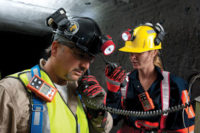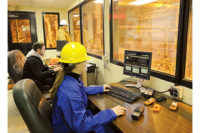The “Triple Constraint” is a well-known principal of project management. It essentially says that if your project scope expands, you’re going to need more time and money to get it done. While the principal makes a lot of sense, the reality is that we are being asked to do more with less. Budgets are shrinking. Resources are tight. Schedules are rushed. We’re all looking for ways to cut costs and increase productivity.
Where does gas detection fit in a world of doing more with less? In a lot of ways, it creates a high level of complication. Failing to properly train personnel to use gas monitoring instruments can result in expensive false evacuations, injuries, and even death. Yet, effective training takes time and money. The benefits to training are clear, but so are the costs.
So what can we do to keep our people safe without committing to expensive and time-consuming training programs? New technologies in gas detection are addressing that exact question.
Current training
If we look at current gas detection training programs, a significant portion of our efforts are focused on making sure people know how to respond to an alarm event. In order to ensure that responses are appropriate, we have to train our teams to be experts in gas detection. We spend hours instructing workers on the hazards associated with exposure to gases at varying levels. We hope they memorize that 8 ppm of HCN requires immediate action, but 8 ppm of CO is within the acceptable range.
Fortunately, lights and audible alarms are designed to take some of the mystery out of hazardous gas conditions. Gas monitors use different colored lights and varying sounds to convey a variety of messages. However, those lights and sounds require some interpretation. How will your team remember what to do if weeks or even months go by without a gas event? Uncertainty leads to company policies that say to evacuate every time a gas monitor goes into alarm, but are all of those evacuations really necessary?
Text-based alarms
New text-based alarm action messages eliminate confusion and allow teams to focus on taking action in the moment. In addition to displaying traditional gas readings, new technology allows companies to customize a message for each level of alarm for each gas type. For example, instead of seeing an oxygen reading of “18.5 percent vol” and flashing lights, teams can see the word “Evacuate” on their gas monitors. Hesitation is eliminated. No time is lost trying to interpret alarms or remember company policy.
Clear text-based alarm action messages give us a way to make sure that everyone, regardless of experience level, knows what to do in the event of a gas event. Whether an employee has years of gas detection experience or is a temporary worker on his first day, a gas monitor that provides clear text instruction shifts the focus away from understanding the nuances of gas detection to taking appropriate action.
Less to memorize
The impact of text-based alarm action messages is immediate and significant. Training sessions become shorter because you no longer have to spend hours training personnel to be experts in gas detection. Instead of dedicating time to how to respond to various levels of hydrogen sulfide (H2S), for example, the alarm action messages can say “Use Respirator” for a low alarm and “Evacuate” for a high alarm. There’s less critical information for our teams to memorize, which means we can address things like how to safely evacuate with more emphasis than before.
Another advantage to alarm action messages is that they can reduce the number of needless evacuations and work stoppages. With clear instructions such as “PPE Required” or “Ventilate,” our teams are made aware of the hazard and are instructed on what to do next. The messages can be used to make it very clear when evacuation is required and when there are other steps that should be taken.
Possibly the most critical advantage of using text-based alarm action messages is the clarity that they provide in times of emergency. Not only do instrument operators not need to recall what the various levels and concentrations of gases mean, any hesitation that might occur because of the criticality of the moment is reduced.
Do more with less
With the introduction of text-based alarm action messages, we are finally able to defy the “Triple Constraint” and do more with less. The alarm action messages help to lower our training costs, reduce false evacuations, and improve response times by providing clear text-based instruction during alarm events.



